Dive Details
Location
Date
02 March, 2014
Time
8:27am - 9:30am
Details
Today we dived the cave again much like we had done yesterday. The only difference was we were going up the more narrow chimney. It was a lot more choppy on the surface today which was going to make things interesting.
As we did yesterday, we stayed at 10 metres until we got to the gutter which is the entrance to the cave and descended to the entrance. After checking out air, we went into the cave behind Troy as we had done yesterday. We followed Troy up the narrow chimney to the sound of dive computers beeping. Despite ascending, the pressure was playing havoc on our ears. I guess the swell was increasing the pressure inside the cave. It would have been nice to see what my computer was saying but as it was dark and my lights face forward, I couldn't see.
We continued through the cave and exited at the other side. There was a small hawksbill turtle sleeping at the exit. We followed the exit gutter down and then crawled up over the ridge again. From the top of the ridge we could see a larger hawksbill turtle below us just on the other side of the ridge. Again, there wasn't much current on the ridge but there was a lot once we descended on the other side. Sheree spotted an octopus crawling over the rocks.
We spent the rest of the dive pottering around the base of the mooring.
Buddy
Sheree Papuni
Seas
Rough
Visibility
20 metres
Duration
62 minutes
Maximum depth
25.6 m
Average depth
14.6 m
Water temperature
22.8°C
Dive Profile from Citizen Hyper Aqualand
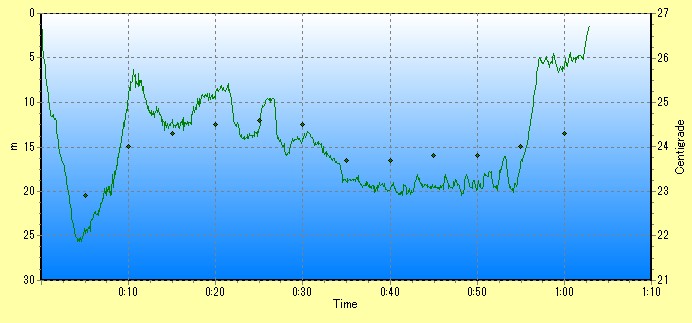
Tides at Yamba AEDT
Note that tides at dive site may vary from above location.
Low
3:32am
0.13m
High
9:59am
1.73m
Low
4:15pm
0.12m
High
10:18pm
1.55m
Video
Camera gear
Camera
Nikon D7000
Lens
Nikon AF-S DX Zoom-Nikkor 18-55mm f/3.5-5.6G ED VR +5 diopter
Housing
Ikelite 6801.70
Lens port
Ikelite 6" Dome Port 5503.50
Strobe
2 x Ikelite SubStrobe DS161
Photographs
Depth information, where present, indicates the depth of the camera when the photograph was taken and can be used to approximate the depth of the subject.

Spotted wobbegong, Orectolobus maculatus. 15.1 m.

Crimson squirrelfish, Myripristis murdjan. 12.2 m.
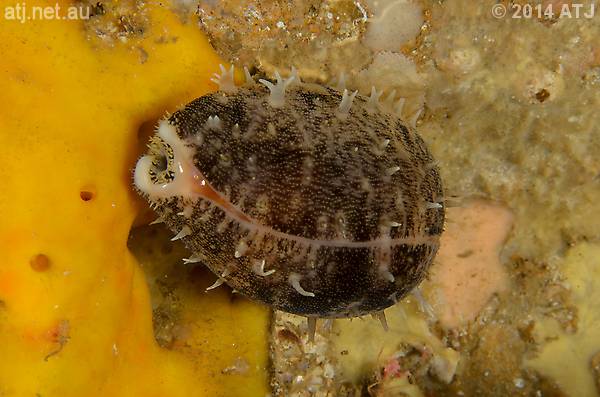
Cowrie. 12.5 m.
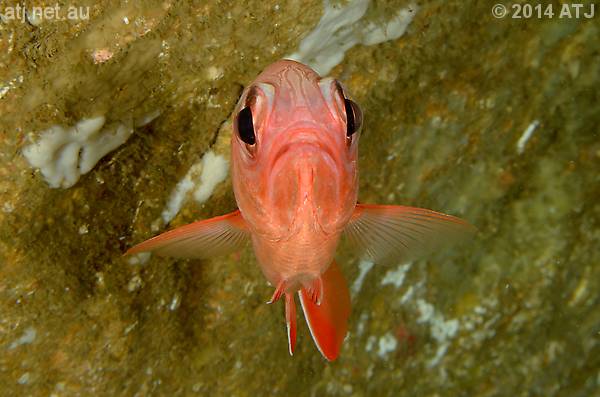
Crimson squirrelfish, Myripristis murdjan. 12.4 m.
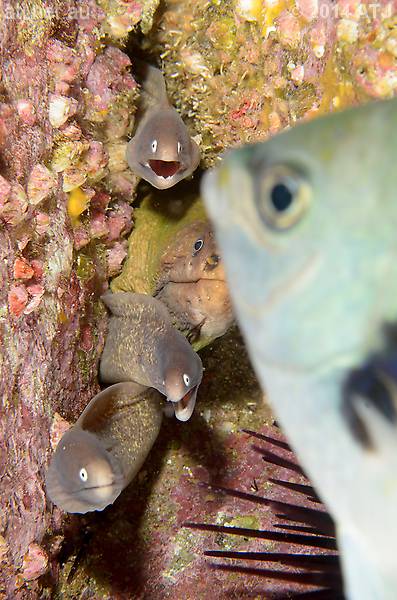
Morays, Gymnothorax prasinus and Siderea thyrsoidea, with photo bombing sergeant major, Abudefduf vaigiensis. 9.3 m.
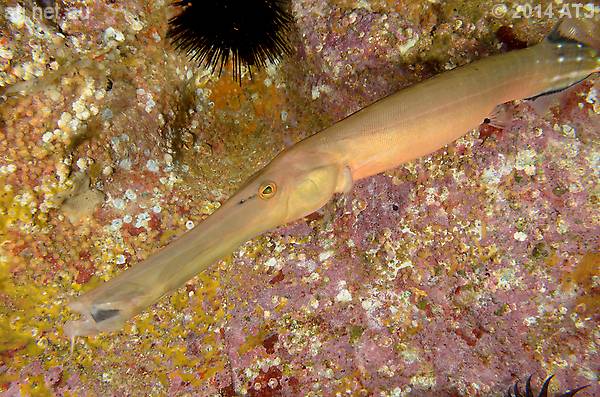
Trumpetfish, Aulostomus chinensis. 8.3 m.
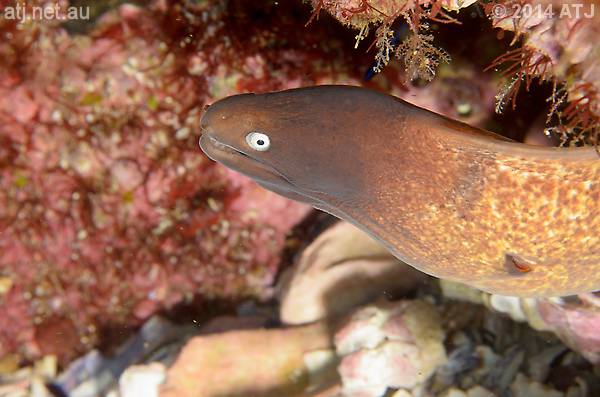
White-eyed moray, Siderea thyrsoidea. 14 m.
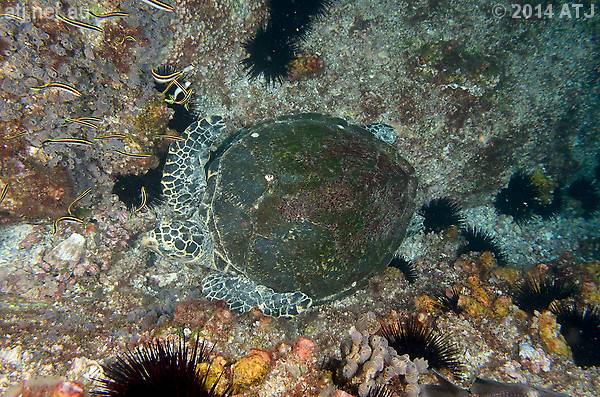
Hawksbill turtle, Eretmochelys imbricata. 9.8 m.

Day octopus, Octopus cyanea. 13.9 m.
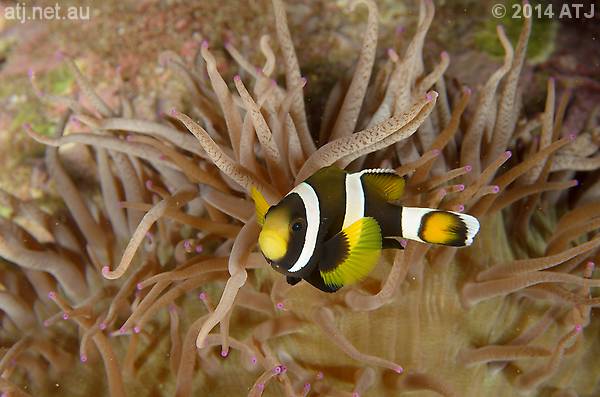
Juvenile blue-lipped anemonefish, Amphiprion latezonatus. 18.9 m.
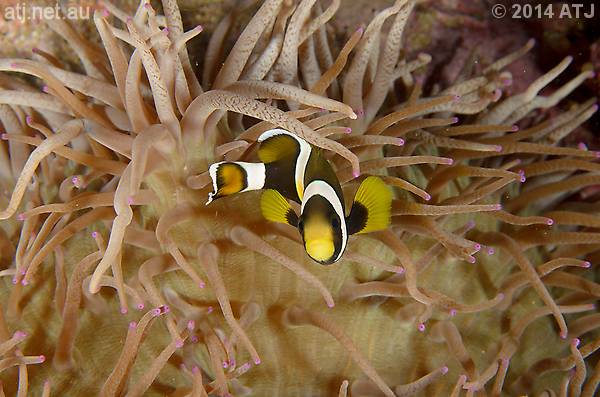
Juvenile blue-lipped anemonefish, Amphiprion latezonatus. 19 m.
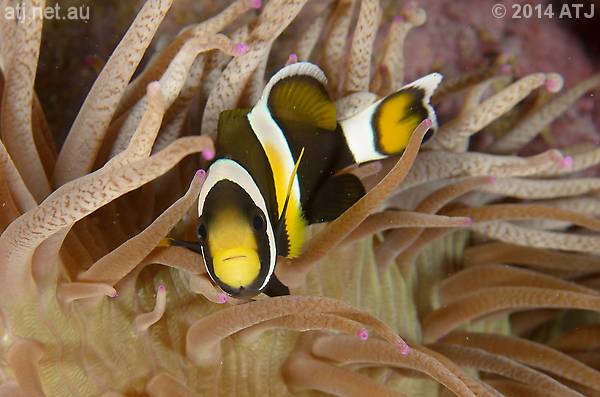
Juvenile blue-lipped anemonefish, Amphiprion latezonatus. 18.8 m.
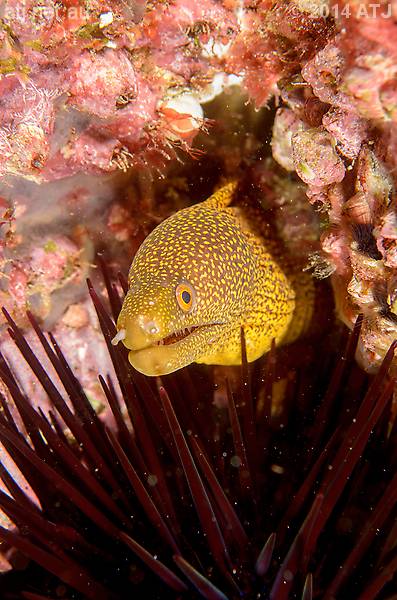
White-speckled moray, Gymnothorax eurostus. 20.2 m.
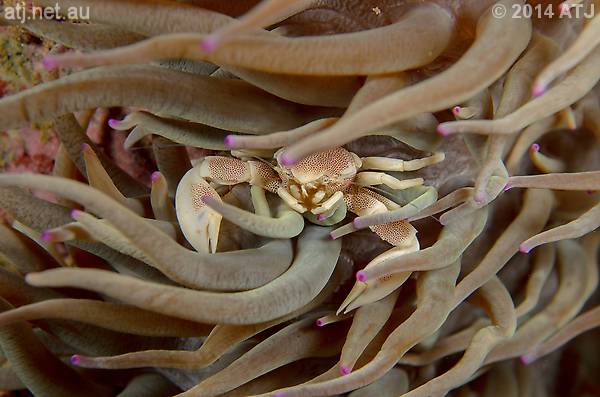
Porcelain crab, Neopetrolisthes maculatus. 19.7 m.
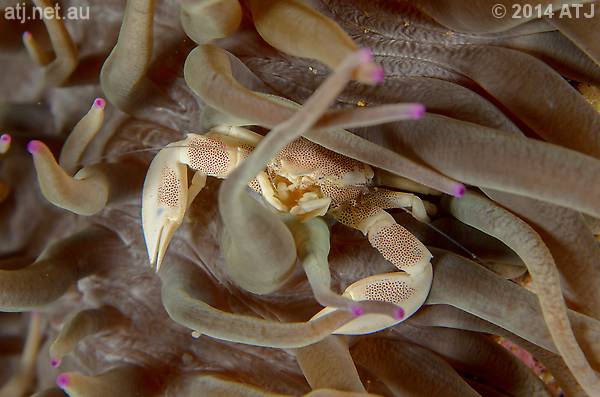
Porcelain crab, Neopetrolisthes maculatus. 19.5 m.
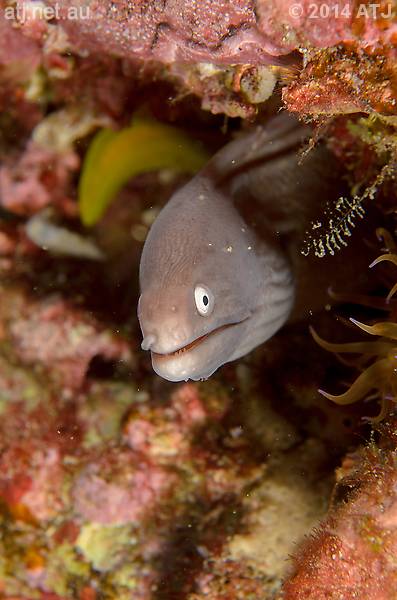
White-eyed moray, Siderea thyrsoidea. 20.3 m.
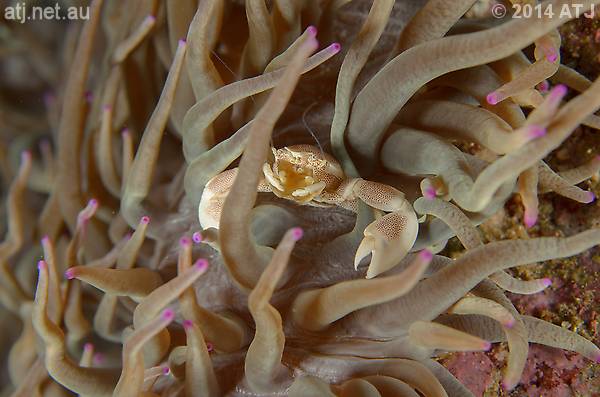
Porcelain crab, Neopetrolisthes maculatus. 19.6 m.
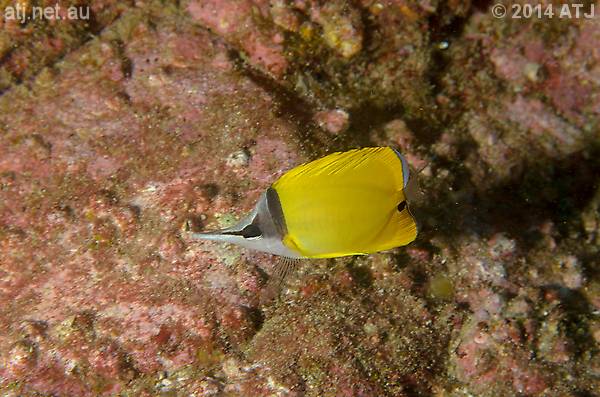
Long-nose butterflyfish, Forcipiger flavissimus. 19.2 m.